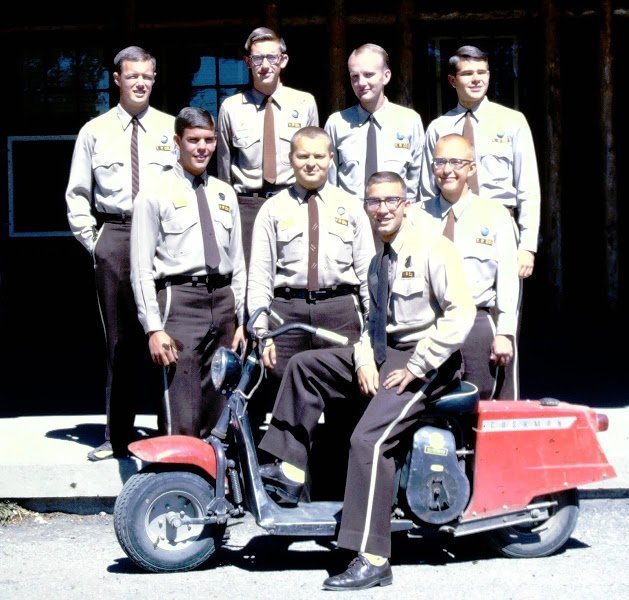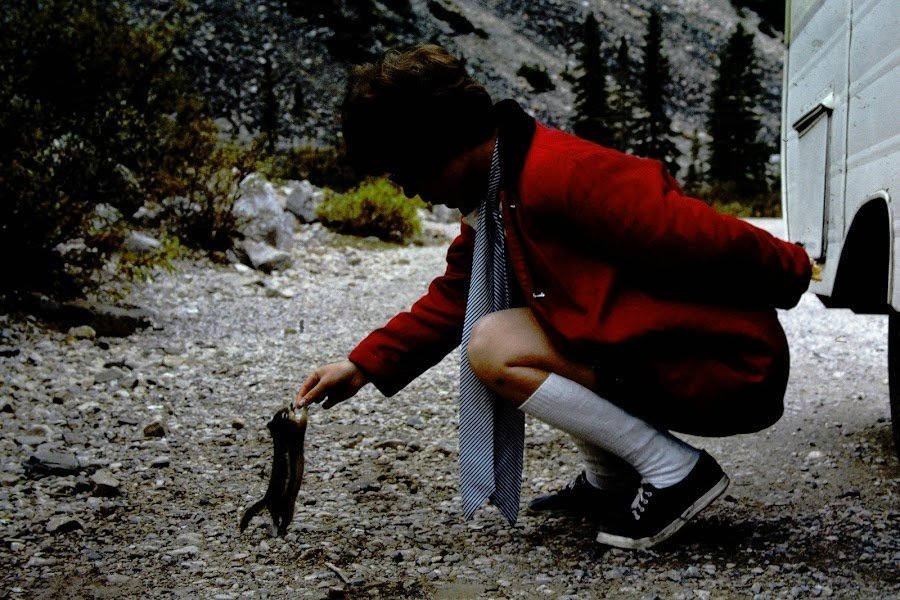Glacier National Park, known for its stunning landscapes and diverse wildlife, attracts millions of visitors each year. The park offers a unique experience with its pristine lakes, rugged mountains, and abundant flora and fauna. Visitors can enjoy hiking, wildlife viewing, and scenic drives through this natural wonderland. Understanding the best times to visit, popular attractions, and essential guidelines can help ensure a memorable and safe experience for people visiting Glacier National Park.
What Are the Peak Visitor Times and Accommodation Options?

The peak visitor season for Glacier National Park spans from May to September, with July and August being the busiest months. During this period, visitors can expect:
- Warm weather
- Fully accessible roads and hiking trails
- Open accommodations and facilities
- Higher prices and larger crowds
Accommodation Availability
| Season | Availability | Pricing |
|---|---|---|
| Peak (May-Sept) | Limited | Highest |
| Shoulder (Mar-Apr, Oct-Nov) | More options | Lower |
| Off-season (Dec-Feb) | Limited | Lowest |
To avoid crowds and higher prices, consider visiting during the shoulder seasons (March to April or October to November).
What Are the Most Popular Hiking Trails in Glacier National Park?

Glacier National Park boasts numerous hiking trails catering to various skill levels. Some of the most popular trails include:
- Going-to-the-Sun Road Trails
- Highline Trail: Scenic views, moderate difficulty
-
Garden Wall Trail: Part of Continental Divide Trail, moderate to challenging
-
Iceberg Lake Trail
- 4.5-mile out-and-back trail
-
Known for scenic lake and surrounding mountains
-
Grinnell Glacier Trail
- Challenging 10.3-mile out-and-back trail
-
Leads to a glacier
-
Avalanche Lake Trail
- 4.5-mile out-and-back trail
- Scenic lake and surrounding forest
For specific details on trail lengths, difficulty ratings, and estimated hiking times, consult park resources or hiking guides specific to Glacier National Park.
What Are the Operating Hours for Glacier National Park Visitor Centers?
Visitor center operating hours vary by season:
Summer Season (Late May to Early October)
- Open daily
- Example: Apgar Visitor Center, 7 AM to 5 PM (May 26 to September 17)
Fall Season (September to October)
- Reduced hours
- Example: 9:30 AM to 4 PM (September 6 to September 30)
Winter and Spring
- Limited hours or weekends only
- Example: 9 AM to 4:30 PM on weekends (January to May 13)
Services offered at visitor centers include:
– Knowledgeable staff for trip planning assistance
– Free maps and park publications
– Backcountry permits and information
– General information about park activities, trails, and safety guidelines
What Wildlife Can Be Seen in Glacier National Park?
Glacier National Park is home to a diverse range of wildlife, including:
Large Mammals
- Grizzly bears
- Black bears
- Mountain goats
- Bighorn sheep
- Elk
- Moose
- Deer
Other Wildlife
- Wolves
- Coyotes
- River otters
- Various bird species
Best Locations and Times for Wildlife Viewing
- Going-to-the-Sun Road
-
Known for sightings of mountain goats, bighorn sheep, and bears
-
Best Times
- Early morning
- Late afternoon
Wildlife Viewing Guidelines and Safety Tips
- No specific permits required for general wildlife viewing
- Enjoy wildlife from a safe distance
- Do not approach wildlife for photographs
- Keep a safe distance from bears and other wildlife
- Always observe wildlife from the safety of your car or a safe distance
- Be aware of your surroundings
- Follow park guidelines and regulations
How Can Visitors Prepare for Weather Conditions in Glacier National Park?
Weather in Glacier National Park can be unpredictable and varies greatly depending on elevation and season. Here’s what visitors should know:
Summer (June to September)
- Average daytime temperatures: 60°F to 70°F (15°C to 21°C)
- Nights can be cool, dropping to 40°F to 50°F (4°C to 10°C)
- Occasional thunderstorms in the afternoons
Winter (November to March)
- Temperatures can drop below 0°F (-18°C)
- Heavy snowfall, especially at higher elevations
- Many park facilities and roads close
Spring and Fall
- Highly variable weather
- Can experience sudden temperature changes and precipitation
Packing Essentials for All Seasons
- Layered clothing
- Rain gear
- Sturdy hiking boots
- Sun protection (hat, sunscreen, sunglasses)
- Insect repellent (especially for summer)
- Extra food and water
- First aid kit
Always check the park’s official website for current weather conditions and forecasts before your visit.
What Are the Rules and Regulations for Camping in Glacier National Park?
Camping is a popular activity for people visiting Glacier National Park. Here are the key rules and regulations:
- Campground Reservations
- Some campgrounds require reservations, especially during peak season
-
Others are first-come, first-served
-
Maximum Stay
- 14-day limit during peak season (June 15 to September 15)
-
30-day limit rest of the year
-
Quiet Hours
-
10 PM to 6 AM in all campgrounds
-
Food Storage
- All food, coolers, and scented items must be stored in hard-sided vehicles or food lockers when not in use
-
This is to prevent attracting wildlife, especially bears
-
Campfires
- Allowed only in designated fire rings
-
May be restricted during dry periods
-
Group Size
-
Maximum of 8 people per site in most campgrounds
-
Pets
- Must be on a leash no longer than 6 feet at all times
-
Not allowed on trails or in backcountry areas
-
Leave No Trace
- Pack out all trash
- Do not feed wildlife
- Stay on designated trails
For backcountry camping, additional permits and regulations apply. Always check the park’s official website or speak with a ranger for the most up-to-date information.
How Can Visitors Minimize Their Environmental Impact in Glacier National Park?
As the number of people visiting Glacier National Park increases, it’s crucial to minimize environmental impact. Here are some guidelines:
- Follow Leave No Trace Principles
- Pack out all trash
- Stay on designated trails
-
Respect wildlife and maintain a safe distance
-
Use Sustainable Transportation
- Utilize park shuttles when available
-
Carpool to reduce emissions and parking congestion
-
Conserve Water
- Take short showers
-
Turn off taps when not in use
-
Reduce Plastic Use
- Bring reusable water bottles and refill at water stations
-
Avoid single-use plastics
-
Proper Waste Disposal
- Use designated recycling and trash receptacles
-
Properly dispose of human waste in backcountry areas
-
Respect Vegetation
- Don’t pick flowers or plants
-
Avoid trampling vegetation off-trail
-
Use Eco-friendly Products
-
Choose biodegradable soaps and sunscreens
-
Educate Others
- Share conservation practices with fellow visitors
By following these guidelines, visitors can help preserve the park’s natural beauty for future generations.
What Are the Best Photography Spots in Glacier National Park?
Glacier National Park offers countless opportunities for stunning photography. Here are some of the best spots:
- Going-to-the-Sun Road
- Offers panoramic views of the park’s diverse landscapes
-
Best times: Sunrise and sunset
-
Lake McDonald
- Known for its crystal-clear waters and colorful pebbles
-
Best time: Early morning for reflections
-
Many Glacier Area
- Swiftcurrent Lake and Grinnell Glacier
-
Best for wildlife and mountain scenery
-
Logan Pass
- Wildflower meadows and mountain vistas
-
Best time: Early morning or late afternoon
-
Two Medicine Lake
- Less crowded, great for reflections and mountain views
-
Best time: Sunrise
-
Hidden Lake Overlook
- Accessible hiking trail with panoramic views
-
Best for wildlife and landscape photography
-
Avalanche Lake
- Surrounded by steep cliffs and waterfalls
-
Best time: Midday for best lighting
-
St. Mary Lake
- Iconic view of Wild Goose Island
- Best time: Sunrise or sunset
Photography Tips:
– Bring a wide-angle lens for landscapes
– Use a tripod for low-light conditions
– Consider neutral density filters for waterfall shots
– Always follow park regulations and stay on designated trails
Remember to practice ethical photography by respecting wildlife and other visitors, and not disturbing natural features for the sake of a photo.